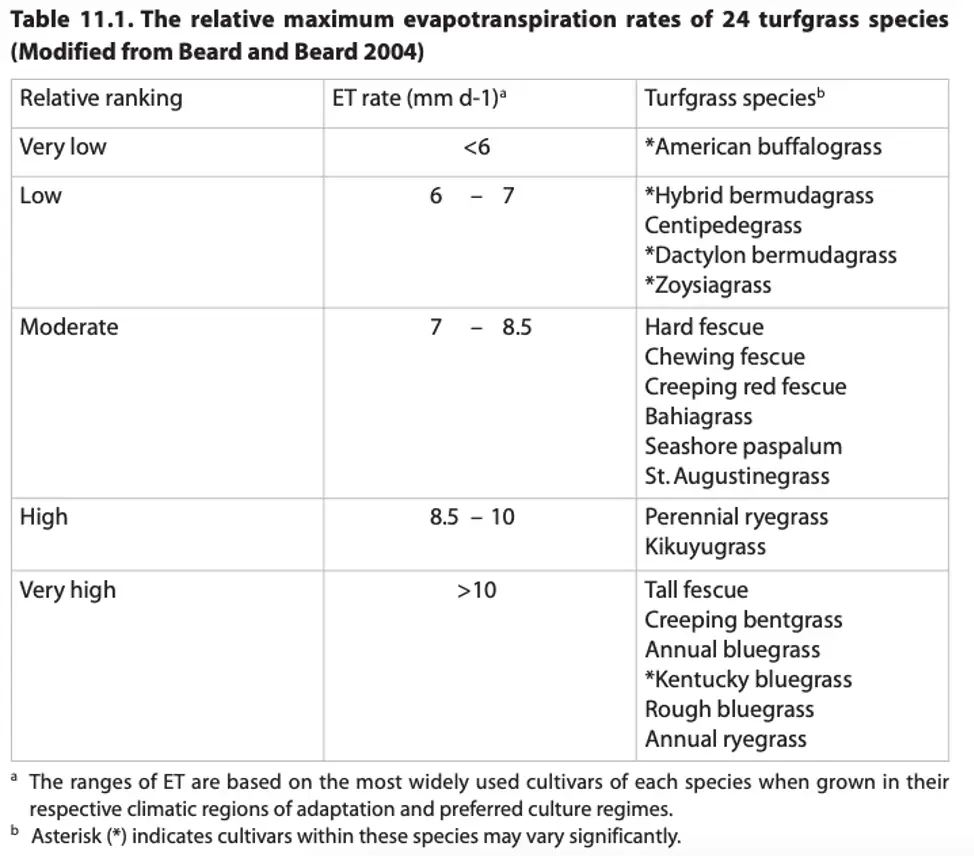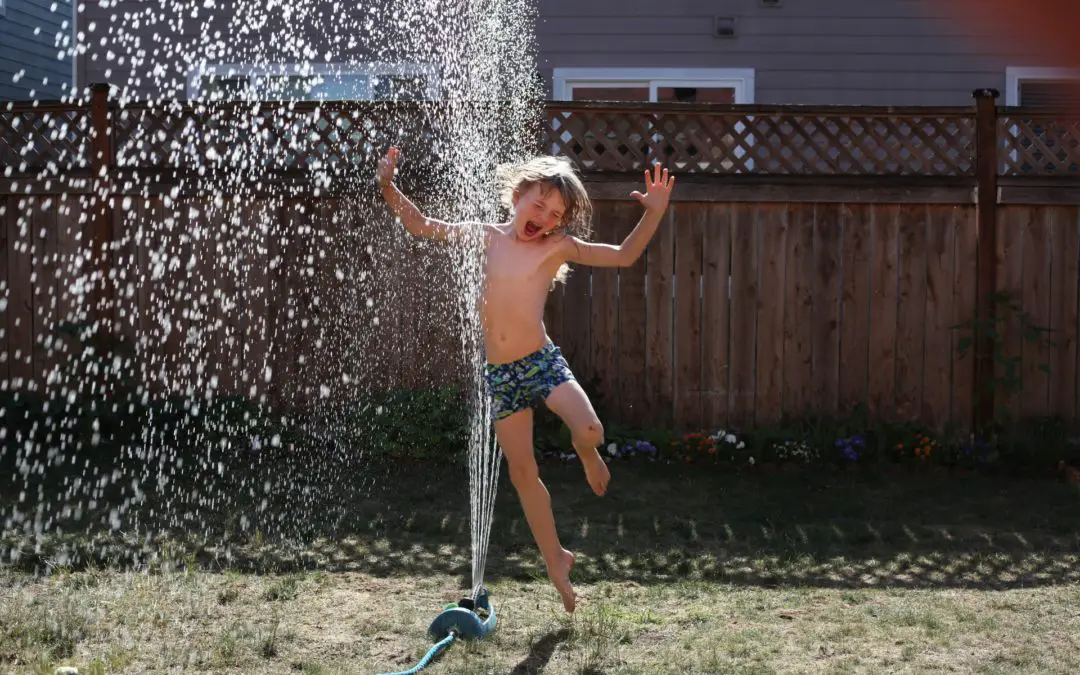Watering your lawn seems simple, but there are a lot of ways you can maximize the benefits. These are my favourite tips and tricks for getting the healthiest lawn with the least water. Let me know if you have anything to add!
Aerate
To make sure that you’re not wasting water and fertilizer due to run-off, aerate your lawn annually. Plug or core aerators help water get down to the roots instead of running off. They also cycle beneficial microbes to the surface to help your thatch break down quicker.
Water slower
Set your exterior faucet on a lower setting. Watering slowly will give the water more time to penetrate your soil. Less will run-off and end up in the storm sewers. This is especially good if you’re using a sprinkler and not watering by hand.
Check your local guidelines
Your municipality will probably have guidelines for watering. Some might even have bans or temporary restrictions. You can get a big fine if you’re in violation. So this is definitely worth a quick look. You can probably find them with a quick google search of your city’s name + “water restrictions”, and you should find something.
My city is Calgary, and their water restriction guidelines are here.
Another option is to call your municipality on the phone. For my city of Calgary, Alberta, Canada, the number is 311. It gets you in touch with an operator that can direct your call for non-emergency services and information.
Assess watering needs
Make sure you need to water in the first place. Keep a container of some sort on the lawn to measure rainfall. A frisbee works great. 2.5 cm (1 inch) of water per week is plenty for most lawns. Leave the container out and then after any rainfall check the height of the water. If it’s less than an inch go ahead and water. And don’t forget to empty the container out after you water so you’re ready to measure next week’s rainfall.
Watch the weather
If you see a big rainfall coming up in the forecast (and you live in an area where you can trust the forecast – I don’t!) then you can probably skip watering that week.
Avoid overwatering
Make sure you’re not watering your lawn too much. Too much water can drown the roots of the grass and encourage fungus and disease. If you see mushroom heads popping up, it could be a sign that that part of your lawn has a little extra water. But certain fungi can be beneficial to your lawn, so don’t panic. Too much watering can also wash the fertilizer right off your lawn.
Deep instead of frequent
Water less often, but for longer – once a week. This ensures that the water penetrates deep into the soil, encouraging deeper root growth. Deeper roots means your turf has access to more water during periods of reduced watering: for example when city water restrictions are in effect, or when you’re on vacation.
Don’t let water run-off onto the street or sidewalk though. If that’s happening you can aerate, or modify your watering setup. Some municipalities will fine you if they catch city water running off your property.
Keep your grass longer
Don’t cut your lawn any shorter than 6 cm (2.5 inches), 8 cm (3 inches) is better. Shorter grass blades give less shade to the roots – water evaporates faster.
Water when it’s cool
Water during the morning, or in the evening – avoid the heat of the day. Watering during the hottest part of the day is wasteful, much of the water will evaporate. The only exception to this rule is during the first couple days of a freshly sodded lawn. Extreme heat can burn fresh sod in a couple of hours. If possible avoid watering at night. This leaves the grass moist until the sun rises, which encourages disease.
Dial in your sprinkler system
Aim your sprinkler or hose to minimize watering driveways and other surfaces that aren’t going to benefit. Over time, in-ground sprinkler heads can wander a bit, or maybe the neighbors’ kids are playing with them.
Do a quick assessment in the spring. Tweak your sprinkler heads if you notice excessive spray where it’s not helping any plants. Most systems are really simple to adjust, google it or play around a little, it’s much less hassle than getting a sprinkler guy out.
Can I water my lawn during a water restriction?
Probably not. The safest thing to do is check out your municipality’s website, or get in touch with them on the phone, see “Check your local guidelines” above, for more info.
And even if it’s allowed, it’s worth considering if you really need to. A water shortage can get worse, do you want to be part of the problem or the solution? You’ll have to weigh this against your lawn’s health. Most lawns are surprisingly resilient.
Should you water your lawn daily?
Your lawn needs at least 1 inch of water every week or two. More for some species. In my area, it works well to water deeply, once a week. Watering daily could be required if you’re in a really hot area, without much shade. Watering early in the morning or late at night can give your lawn a chance to absorb more water, instead of it evaporating.
What grass needs the most water?
Bluegrasses and ryegrasses tend to use the most water. Check out the table in the next section (“What is the most drought tolerant grass?”).
What is the most drought tolerant grass?
Grasses for southern, hotter areas that are drought tolerant, are:
- Bahiagrass
- Bermudagrass
- Buffalograss
- Zoysiagrass
- Augustinegrass
In northern regions, grasses are often chosen for their cold tolerance.
- Tall fescue
- Red fescue
- Fine fescue
- Kentucky bluegrass
But just because a grass is common in an area, doesn’t mean it’s chosen for its’ dought tolerance.
A lot of grasses (for example Ryegrass) will go dormant during droughts. The vegetation may yellow, and look dead, but the roots are usually more resilient than you would think.
If you’re interested in this type of thing from a scientific perspective, there’s a link to a researcher on my About page. She’s doing some incredible work with drought tolerant plants.
The following table, prepared by Bingru Huang, lays out evapotranspiration rates for many common species of grass. Evapotranspiration Is how plants use water, they evaporate and transpire it to the air.

Table source.

I’m Alex Lafreniere. I learned a lot about plants when I built and operated a landscaping company. But, there’s always more to learn. Ever since travelling across the world, I’ve wanted to find ways to bring more tropical and exotic plants into my life. This is the site where I share everything I’ve learned with you.
This site is owned and operated by Plant Hardware, a sole proprietor headquartered in Calgary, Canada. Plant Hardware is a participant in the Amazon Services LLC Associates Program, an affiliate advertising program designed to provide a means for sites to earn advertising fees by advertising and linking to Amazon.com.Plant Hardware may also participate in affiliate programs with Bluehost, Clickbank, CJ, ShareASale, and other sites. Plant Hardware is compensated for referring traffic and business to these companies.

